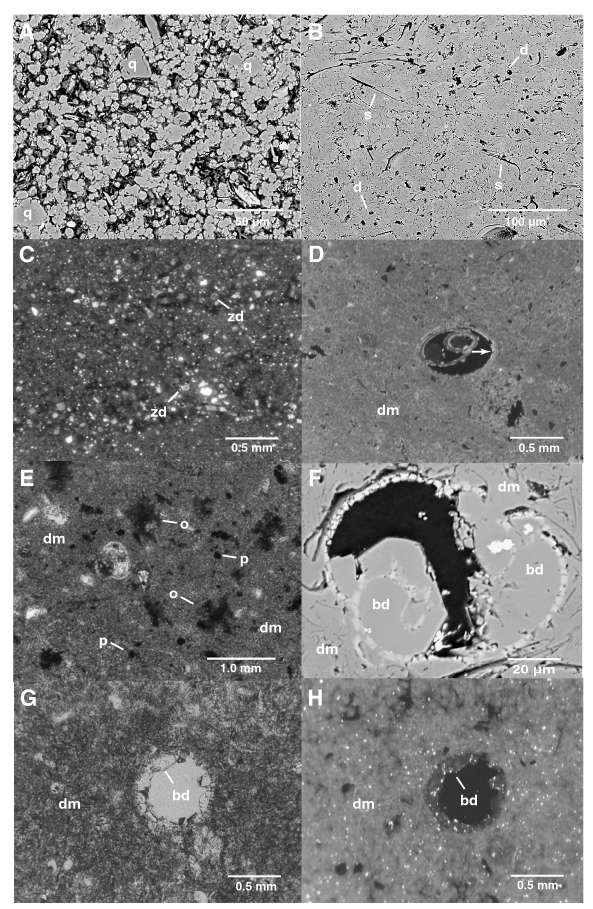Figure F2. A. SEM-BSE photomicrograph showing the texture of a semilithified horizon. Note the high intercrystalline porosity (black) in relation to the lithified horizon and the small microcrystalline dolomicrite aggregates) in semilithified horizons. Horizon growth occurs through the coalescence of aggregates. The silt-sized subangular grains are detrital quartz clasts (q). B. SEM-BSE photomicrograph showing the texture of a diatom-rich lithified horizon. The elongate black areas are siliceous spicules (s). The round black areas and partially occluded round black areas are diatom tests (d). Note that pore spaces are almost completely occluded by dolomicrite (light gray color). C. CL photomicrograph of authigenically cemented Bouma DE turbidites from the Angola Basin. Turbidites are normally graded and have silt-sized detrital grains within their bases. Zoned dolomite grains (zd) have cores of detrital dolomite (luminescent) or authigenic pyrite crystals (black) and possess secondary luminescent dolomite rims. D. CL photomicrograph of slightly recrystallized foraminifer tests in a matrix of luminescent dolomicirite (dm). The arrow points to the outer margin of the shell wall where recrystallization has produced a thin luminescent intraparticle lining. E. Plane-light photomicrograph showing organic-rich blebs (o) and abundant pyrite grains (p) within a matrix of dolomicrite (dm). This texture is characteristic of dolomite samples examined in this study. F. SEM-BSE photomicrograph showing a foraminifer test partially occluded by blocky dolomite (bd) in a dolomicrite matrix (dm). G. Plane-light photomicrograph showing a diatom test partially occluded by blocky dolomite (bd) in a dolomicrite matrix (dm). H. CL photomicrograph of (G) showing the nonluminescent character of blocky dolomite and the mottled CL texture of the dolomicrite matrix. The bright specks are silt-sized grains of quartz that luminesce pale blue.

![]()